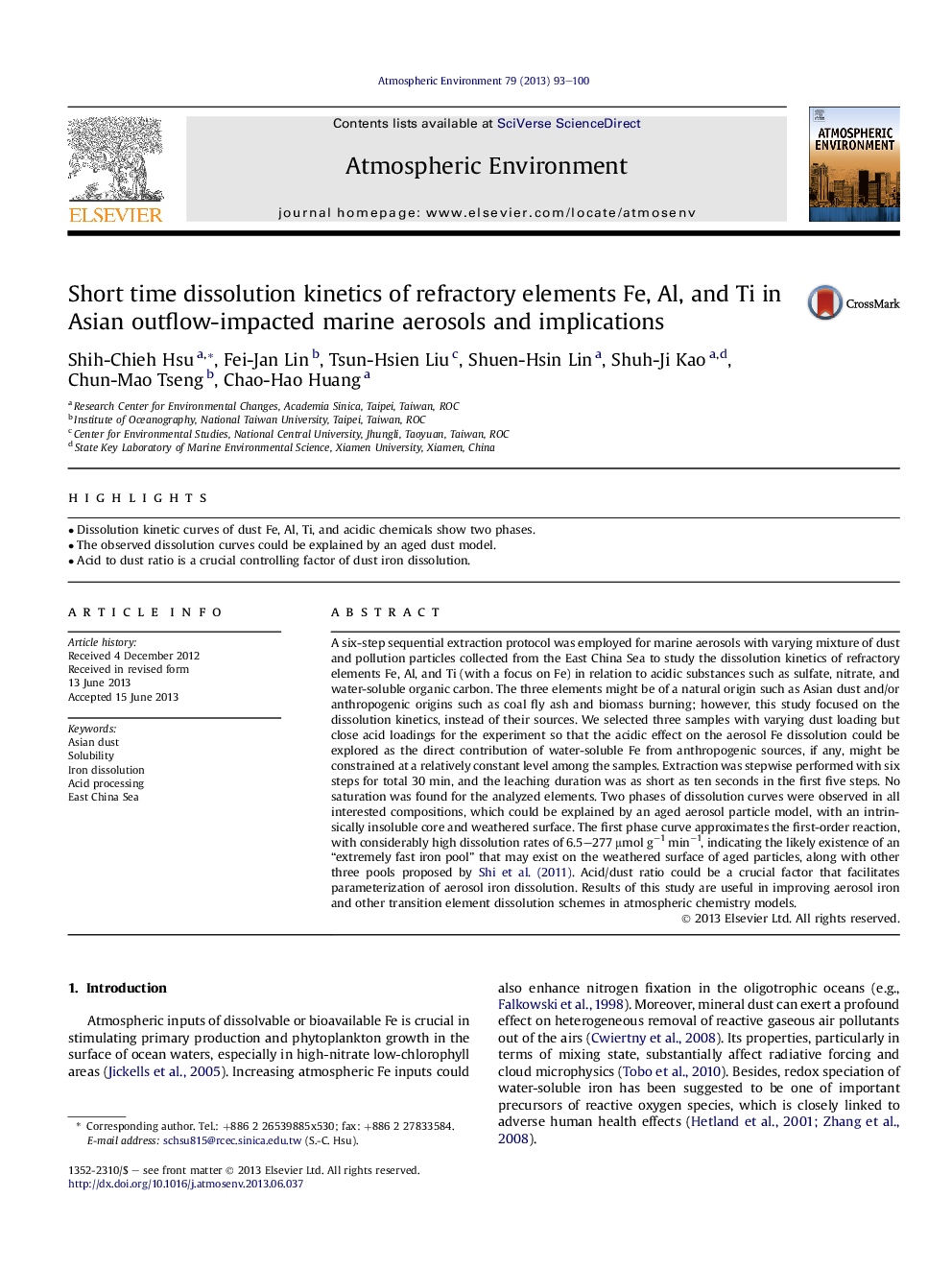| Article ID | Journal | Published Year | Pages | File Type |
|---|---|---|---|---|
| 6341422 | Atmospheric Environment | 2013 | 8 Pages |
â¢Dissolution kinetic curves of dust Fe, Al, Ti, and acidic chemicals show two phases.â¢The observed dissolution curves could be explained by an aged dust model.â¢Acid to dust ratio is a crucial controlling factor of dust iron dissolution.
A six-step sequential extraction protocol was employed for marine aerosols with varying mixture of dust and pollution particles collected from the East China Sea to study the dissolution kinetics of refractory elements Fe, Al, and Ti (with a focus on Fe) in relation to acidic substances such as sulfate, nitrate, and water-soluble organic carbon. The three elements might be of a natural origin such as Asian dust and/or anthropogenic origins such as coal fly ash and biomass burning; however, this study focused on the dissolution kinetics, instead of their sources. We selected three samples with varying dust loading but close acid loadings for the experiment so that the acidic effect on the aerosol Fe dissolution could be explored as the direct contribution of water-soluble Fe from anthropogenic sources, if any, might be constrained at a relatively constant level among the samples. Extraction was stepwise performed with six steps for total 30 min, and the leaching duration was as short as ten seconds in the first five steps. No saturation was found for the analyzed elements. Two phases of dissolution curves were observed in all interested compositions, which could be explained by an aged aerosol particle model, with an intrinsically insoluble core and weathered surface. The first phase curve approximates the first-order reaction, with considerably high dissolution rates of 6.5-277 μmol gâ1 minâ1, indicating the likely existence of an “extremely fast iron pool” that may exist on the weathered surface of aged particles, along with other three pools proposed by Shi et al. (2011). Acid/dust ratio could be a crucial factor that facilitates parameterization of aerosol iron dissolution. Results of this study are useful in improving aerosol iron and other transition element dissolution schemes in atmospheric chemistry models.
